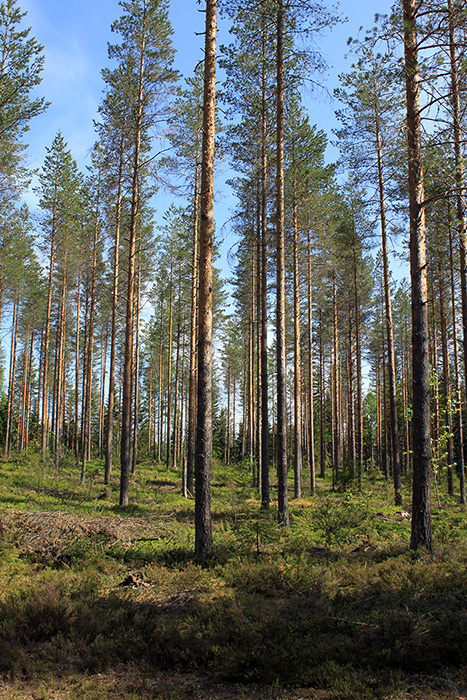Fertilisation is the fastest and most effective way to increase the rate of growth of forests and their ability to sequester carbon. Trees in fertilised forests grow faster, and the timber yield per hectare is higher.
Ash fertilisation increases the efficiency of wood production, especially in young and mature growth forests. The growth of the fertilised forest increases by between 2 and 6 cubic metres per year per hectare, which shortens the forest rotation period and thinning interval. Growing stock is becoming more abundant and the amount of timber that can be put to commercially valuable use for producing sawlogs is increasing.
Fertilisation corrects nutrient imbalances and deficiencies that interfere with the normal growth of growing stock. With the aid of fertilisation, trees gain more benefit from the growth potential of forestland, and viable trees are also more tolerant of forest damage.
However, fertilisation can also cause nutrients to leach into waterways and expose growing stock to snow and storm damage unless the fertilisers are carefully targeted to the right areas in order to minimise risks.

Precise criteria for targeted fertilisation
Fertilisation is are carefully planned based on area-specific information. Based on forest resources and other available data, we can select the precise areas each year where preventing deficiency symptoms and improving growth is most valuable. The criteria for selection of these growing stock target areas include age, quantity, sturdiness, density, quality, proportions of different tree species, health of the stock, the amount of time since the previous felling and also from the previous fertilisation, the time until the next felling, as well as the geographical location, heat summation zone and nutrient content of the area. In addition, information on the biodiversity of natural areas, groundwater areas and other possible restrictions on use of fertilisers will be taken into account so that fertilisers are only targeted to areas that are permitted in accordance with the recommendations and certification criteria.
Fertilisers are spread according to the plans made, and the procedures are documented as spatial data in our enterprise resource management system. In this way, we can also monitor the effects of fertilisation by fertilised area, by growth area, and the total effects.
Fertilisers are considered to have about a 10-fold positive impact on the climate. Growing stock can sequester 10 times more carbon dioxide from the atmosphere than is released into the atmosphere by the production, transportation and application of fertilisers. Fertilising forests is thus the best action that can be taken to benefit the climate.